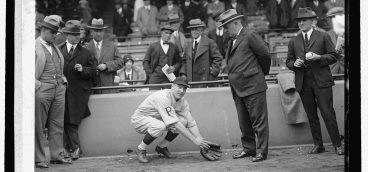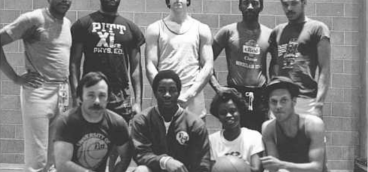Making It Happen
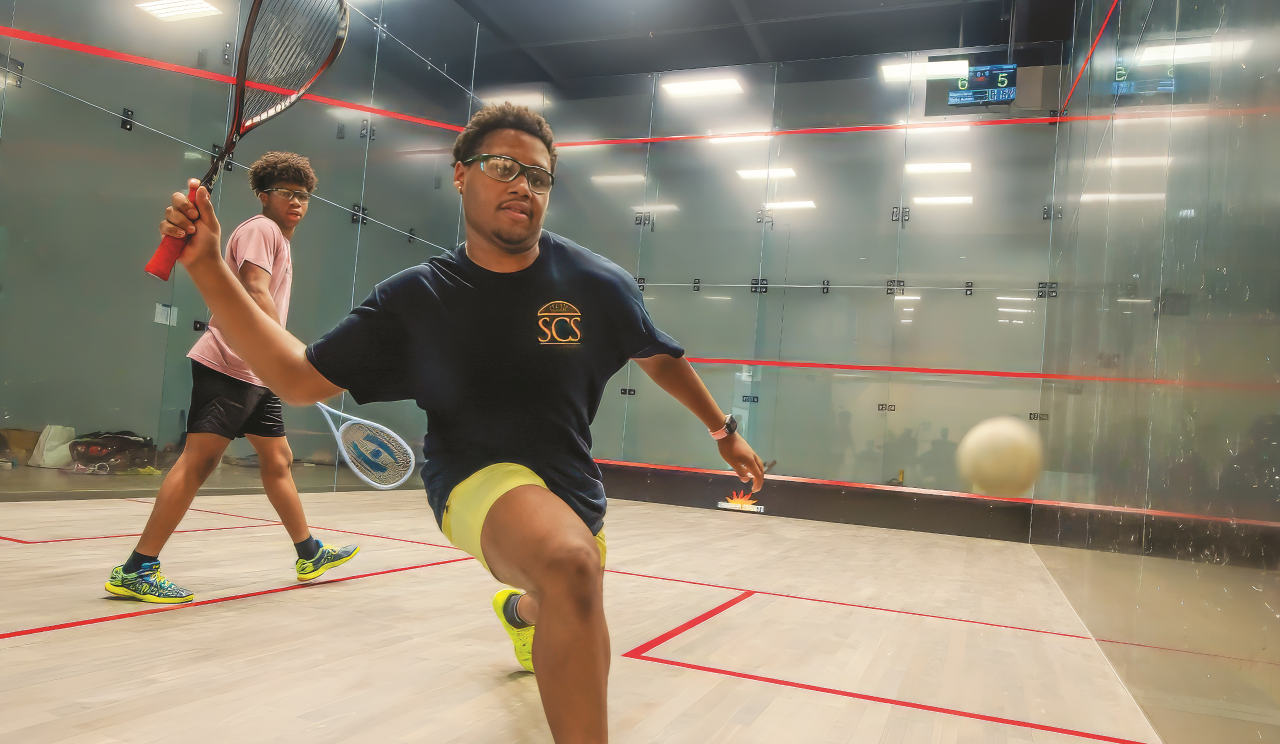
Mention the game of squash and it will likely conjure a traditional image of men in whites, whacking a hard, hollow ball off the walls of an enclosed court in the rarefied confines of a private club, prep school or eastern college.
The indoor game with the long-necked racquet and dark rubber ball hasn’t always been that way, though. Its origins derive from a similar game called “rackets,” a descendent of tennis played in the prisons of London in the early 19th century.
In the 1830s, boys at London’s famous Harrow School picked up the sport with the ball that “squashed” when it hit the wall, and it spread to other schools. The first squash court in the U.S. was built in 1884 at St. Paul’s School in Concord, New Hampshire.
And now, in Pittsburgh, with the opening of a magnificent new squash facility in the long-impoverished Larimer neighborhood, the sport is changing again. And that’s exactly the point.
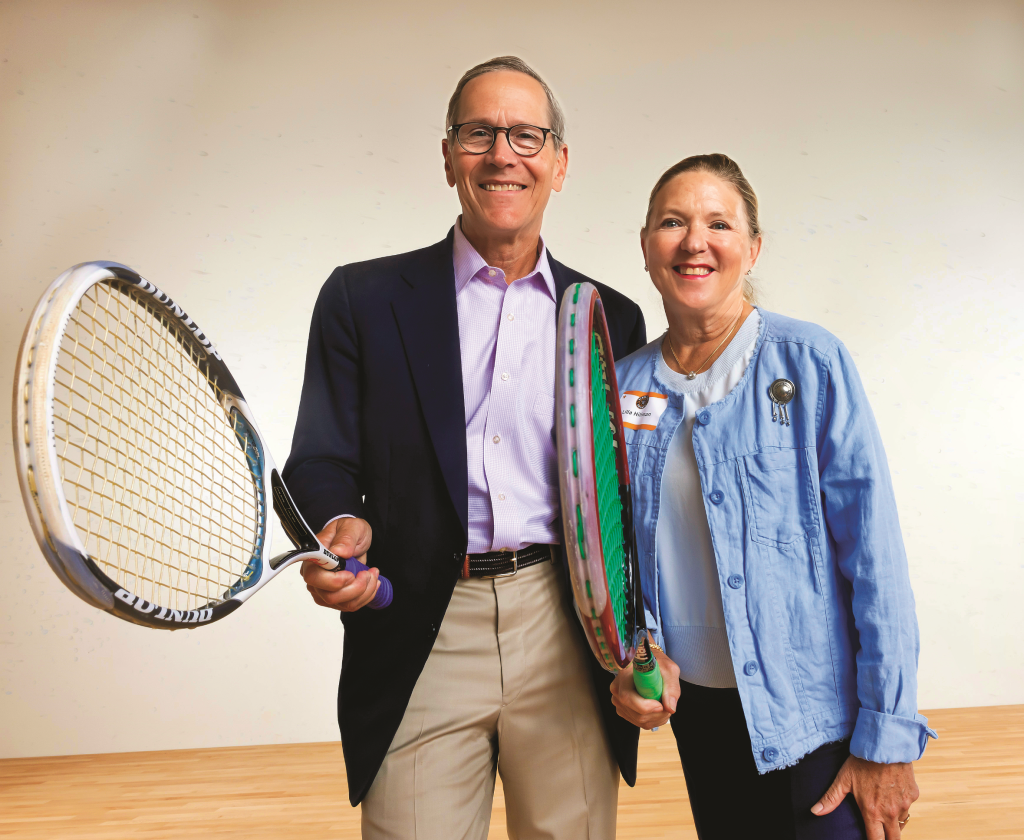
Led by board chairman David Hillman, a 10-year-old nonprofit named Steel City Squash raised $11 million over five years to build the 19,000-square-foot building with courts, classrooms and locker facilities. Steel City is one of 21 U.S. members of the Squash + Education Alliance, whose mission is to help young people from disadvantaged backgrounds fulfill their academic, athletic and personal potential through mentoring and squash-playing — ultimately leading to better educational opportunities and outcomes.
“We are one of the few programs that are built on the pedagogical approach of starting with students who are young and working with them with a longitudinal approach,” said Brad Young, Steel City’s founding executive director. Young came to Pittsburgh in the summer of 2014 and met with Steel City’s founding board members: Hillman, Tim O’Brien, Jeremy Feinstein, Beth Fedorowich, and Merrill Stabile. “When the board offered me the executive director position, I moved to Pittsburgh with my family.”
Young described Steel City as a consistent third space for kids. “There is home, school, and then our Steel City Squash Academy. As a safe, supportive place, we are really about creating opportunities to access pathways to success.”
The facility’s staff carries out a holistic approach as it doubles as both an education and sports center. Students from 4th through 12th grades spend half their time doing homework, being tutored, mentored, or advised about college or careers and then switch to playing squash. Currently the facility serves local students in the afternoon from 12 schools, eight of which are within a mile and a half of the facility. So far, 65 students are enrolled.

Designed by GBBN and constructed by PJ Dick, the center in Larimer includes two classrooms, a fitness room, a college and career center, lounge, locker rooms, a wellness room, and kitchenette, and is the only Squash + Education Alliance member that includes a four-glass-wall singles court and a doubles court, as well as six international singles courts.
The idea got started when Talbott Simonds, a Pittsburgher now living in New York, became familiar with the Squash + Education Alliance in 2013 and noted that the group had branches in Philadelphia, Baltimore, Cincinnati and Chicago, but nothing in Pittsburgh. He approached David Roger, president of the Hillman Family Foundations, and the two, along with several other Pittsburgh squash players, connected with the University of Pittsburgh, which had six underutilized squash courts, and entered into a 10-year lease between Pitt and the newly created Steel City Squash.
“And then we made one more fantastic early decision,” said Simonds, “which was recruiting David Hillman to be the chairman of the board. He has really shown incredible leadership for the past decade.”
For Hillman, Steel City Squash offered a chance to combine his love of squash “with a desire to help underserved youth in Pittsburgh, and to have a meaningful impact on the community in which I have spent my entire life. The construction of our world-class facility will not only expand the size and quality of our Academy program, it will also help to put Pittsburgh on the squash map nationally, and expand the universe of who can play squash here.”
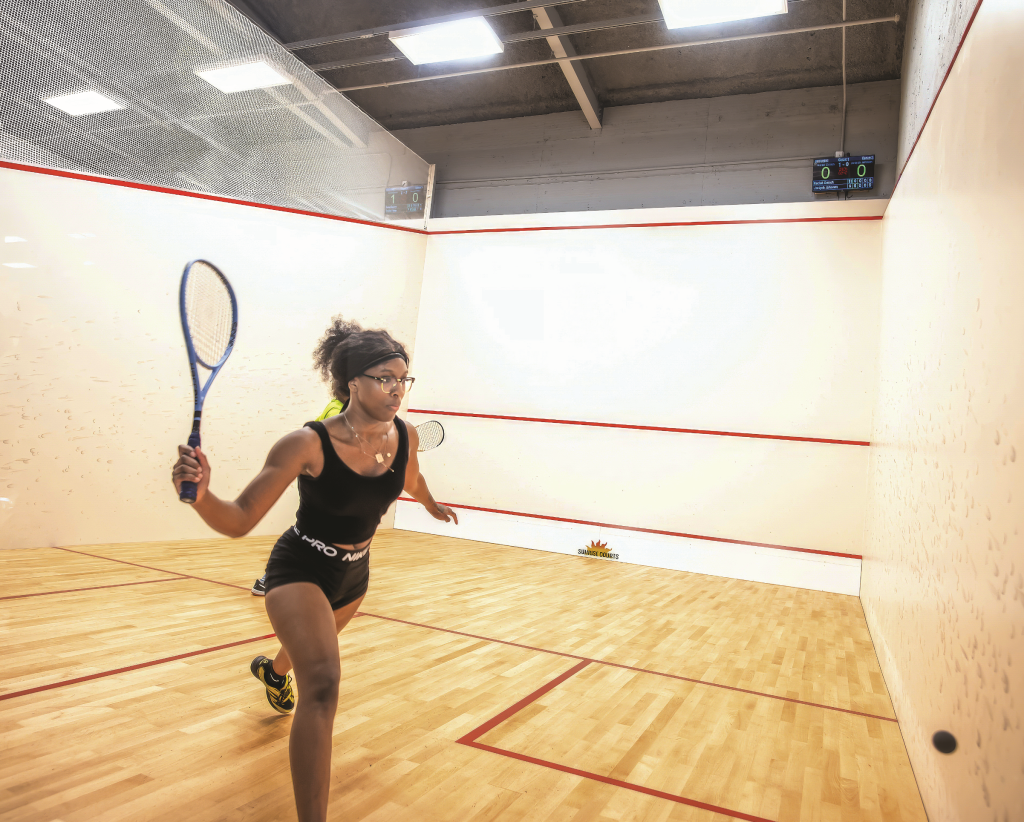
How Larimer became the new center of the Pittsburgh squash world involves Talbott’s brother Henry Simonds. With Pitt announcing in 2017 that it would be getting rid of the squash courts Steel City was using, the question was where to build. Henry thought Larimer might be ideal. He had moved back to Pittsburgh in 2017 and was getting to know the city again by riding his bike through various neighborhoods.
“I rode through Larimer out to Lincoln-Lemington-Belmar and I was astounded how much empty land there was,” Henry said. “It was different from other areas in the city because it seemed like a vast expanse of undeveloped land. So Brad and I had a discussion, and I said, ‘Hey, have you thought about Larimer?’”
Henry brought the idea to Donna Jackson and Betty Lane, leaders of the Larimer Consensus Group, which has several goals, one of which is to build a sustainable community through partnerships. “They suggested we go to Applebee’s for lunch, where I introduced them to Brad and started the conversation about building a Steel City Squash center in Larimer. They loved the idea. It was obviously going to be a Herculean effort, but they couldn’t have been more thrilled about it. Neither of them knew what squash was at the time, but they realized the center would be health-centric, and about achievement, education, and career readiness.”
As Donna Jackson said, “Steel City Squash is not just about the sport of squash itself. It’s about bringing an educational component and also creating a good relationship with the community at-large and putting Larimer back on the map.”
Betty Lane invited Brad Young to come back the next day with another board member to tour Larimer, and she gave them an oral history of the neighborhood.
“It was, to this day, one of my favorite memories in Pittsburgh,” Young said. “We drove around the Larimer neighborhood hearing lots of stories, and after two hours I remember we pulled up at the corner of Larimer Avenue and Shetland Street, and Miss Betty pointed to this vacant block and said, ‘That’s where you’re going to build your facility.’”
And that’s what happened.
The new facility also will be home to Chatham University’s men’s and women’s varsity squash teams, and the hope is that Chatham’s players and students will also help coach, tutor, and mentor the kids in the Steel City Squash program.
“I’m getting better, and it’s really, really fun,” said Bryce Winstead, a 5th grader who goes to Urban Academy and signed up again this year.
When Bryce first explained the program to his mother, Erica Winstead, “He sounded so excited. And I was like, ‘OK, we found a winner,’” she said. “He’s networking, sharing, and he’s really opening up. And the staff is always accommodating and really super nice.”
As Hillman said, “We are located in a community of need, but we are a half-mile from a pretty affluent part of town. So it allows us to blend these two worlds a little more effectively.”
The Steel City board hopes the unique facility will encourage more investment and community development in Larimer. And Pittsburgh Mayor Ed Gainey agrees with them: “Steel City Squash is an invaluable resource in the Larimer neighborhood, serving as a testament to the power of equitable development and positive investment in the future of underserved communities.”
Hillman thanked Gainey at the new center’s September dedication, noting that when he was previously a state representative, Gainey helped secure $1 million in state funding.
“David (Hillman) is the one who put this project on his back and said, ‘We are going to get it done,’” said Young, Steel City’s executive director. “The vast majority of credit goes to him and to Miss Donna, who equally said, ‘I want to do this and I’m going to make it happen.’ And I just followed their lead.”







